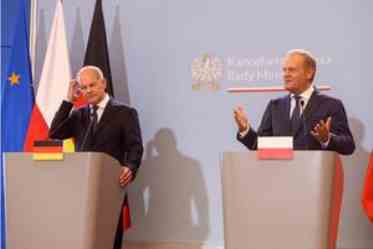
Soaring Interest Rates To Bolster Financial Sector
Doha: Qatar's financial sectors will continue to witness significant net profits in the coming quarters due to increasing interest rates. A report by Fitch Solutions indicated that huge net interest margins have continued to support the bank's profitability this year.
The net profits of Qatar National Bank surged by 7 percent y-o-y to QR8.2bn during the first half of 2024, whereas QIIB registered a growth of 6.5 percent to QR655m during the same period as compared to H1 2023. Moody's assigned“A2” Ratings to QIIB with a stable outlook.
Market experts highlight that increased lending rates and revving credit growth will persist to strengthen the banks' income. Nevertheless, pressure on net profits is expected to emerge next year, due to cuts to policy rates commencing from September 2024, and higher funding costs, due to increased reliance on domestic funding, and a lower loans-to-deposit ratio.
The report said:“Higher for longer interest rates will bode well for the banks' profitability. However, this could put pressure on banks with elevated exposure to the struggling real estate sector, leading to a tickup in non-performing loans.”
Meanwhile, non-performing loans inched up from 3.7 percent in 2022 to 3.9 percent during the past year. Additionally, banks have adequate provisions for such exposures.
In terms of its asset quality, the country's banking industry NPL ratio surged from 2.2 percent in 2019 to 3.9 percent in 2023, primarily due to the end of pandemic-related support and the struggling realty market.
On the other hand, banks across the country remain well-capitalised, with the capital adequacy ratio (CAR) growing from 18.6 percent in 2019 to 19.2 percent in 2023.
In the funding structure, the financial institutes are largely dependent on global funding.
“While the share of foreign funding has declined from a recent high of 40 percent in October 2021 to 34 percent in December 2023, this proportion remains high, especially compared to peers, exposing the banks to vulnerabilities,” it said.
Researchers stressed that new regulations to disincentivise support on non-resident deposits for financing are expected to reduce the exposure to foreign funding.
However, on the liquidity side, the loan-to-deposit ratio has been constantly rising over the years, reaching 127.1 percent in December 2023.
Albeit the lending opportunities are maximised, the market experts elucidate that“It is above the prudential limit of 100 percent and underlines possible vulnerabilities to liquidity risks if banks do not have sufficient funds to cover withdrawals.”
“The QCB has attempted to address this issue by modifying the loan-to-deposit ratio calculation to include banks' borrowing with different maturities in 2022, but the ratio has continued to increase. That said, we believe that these risks will be offset by the sovereigns' substantial foreign assets,” it added.
Additionally, the Qatar Investment Authority (QIA) has acquired $475bn in assets under management, equivalent to 200 percent of GDP and 25 percent of bank assets.

Legal Disclaimer:
MENAFN provides the
information “as is” without warranty of any kind. We do not accept
any responsibility or liability for the accuracy, content, images,
videos, licenses, completeness, legality, or reliability of the information
contained in this article. If you have any complaints or copyright
issues related to this article, kindly contact the provider above.






















Comments
No comment